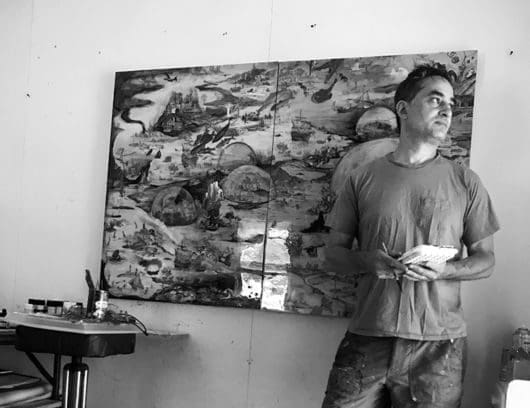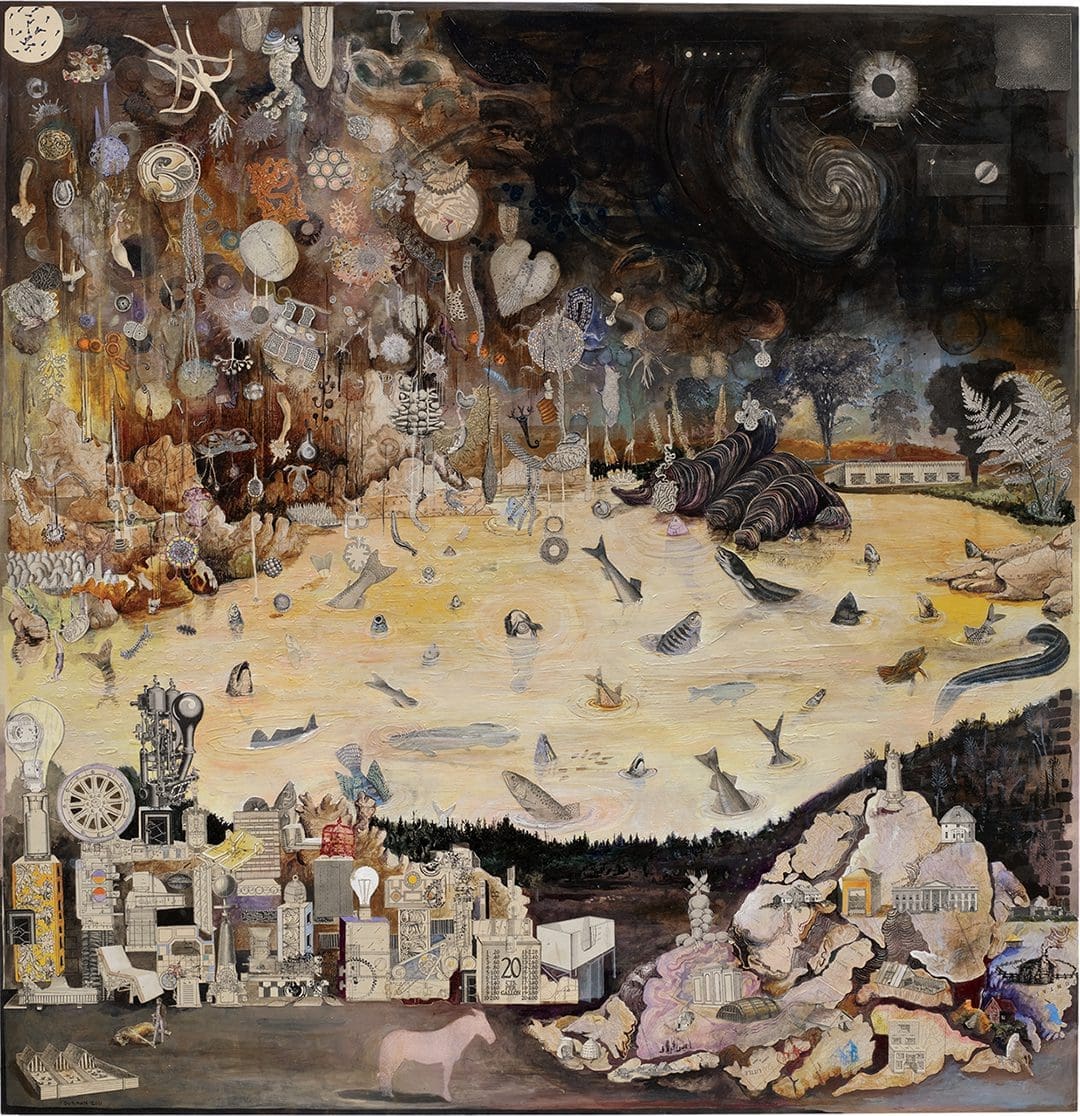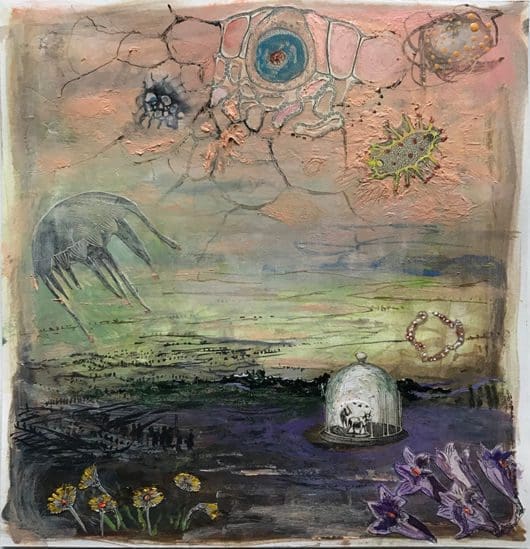Though his new body of works are reflections of the turbulence wrought by the 2020 pandemic, Dorman has long been interested in depicting the visual and moral tension between apparent incompatibilities: humans and nature, chaos and structure, horror and humour. Influenced by Hieronymus Bosch and Pieter Bruegel, the wealth of Dorman’s works are in the detail, as every nook and cranny of his compositions stages small, almost imperceptible figures, creatures or structures battling out the existential contradictions that the artist presents in each of his paintings. Dorman implicates history in his work by his strong use of allegory, which has traditionally been used in Western art history as a way of subtly conveying a message without being censored or even prosecuted by political or religious institutions.
Josh Dorman: Plague Journals

Societies locked under domes, enlarged views of bacteria swarming about a horizonless landscape, burning houses, polluted waters and tiny human figures dotting the composition like small insects… the new works by Josh Dorman offer a cautionary and fantastical outlook on a remarkably dense, multilayered world.



In its aesthetic style and subject, Twenty Twenty is particularly influenced by Bruegel’s Triumph of Death and its non-exhaustive depiction of an army of skeletons submerging the earth. A picture built as a seemingly endless puzzle of micro-details and anecdotes, Triumph of Death strikes a balance between humor and horror, a tone that was readily taken up by Dorman in his new body of works.
Death does not discriminate in Bruegel’s masterpiece. In the cumulative world that Dorman pieces together through his various paintings of an apocalyptic landscape, however, the plague that has swept through the landscape has left nothing unchanged, nothing unshaken. Even those who seek solace under their glass dorms have been forced to reconsider the parameters of their life under this new, apocalyptic reality.
I was thinking a lot of Breugel’s ‘Triumph of Death’ as we’re living through a similar time of plague, and somehow the notion of these enclosed cities emerged. –Josh Dorman

The concept of the apocalyptic landscape has long played an important role in Dorman’s work. The idea of spreading illness, disaster and colliding societies has been circling the artist’s mind for several years, notably manifesting in his 2011 painting Mighty Rain. In his new body of work, he combines this interest in illness with his long-standing concern for climate change and the disastrous effects it could have on the globe to create a multi-layered depth to his fantastical, apocalyptic world.


As the current pandemic spreads throughout the globe, health and environment have emerged as intrinsically linked. Over the last few months, reduced human activities resulted in a nearly 20% drop in Co2 emissions. The earth is breathing deeply, and nature reclaiming the spaces humans have retracted from. Perhaps, Dorman suggests, there might be a lesson that nature—and the current virus—is attempting to teach reckless human societies barrelling towards an ecological point of no return.

The stunningly complicated and delicate relationship between humans and their health, society and the planet, tangles and untangles itself in the immense detail of Dorman’s paintings, drawings and animations. Cross section views of the artist’s internal landscape allow the viewer to study underwater worlds and subterranean secrets, thus offering a holistic view of a landscape that can be understood as a physical manifestation of society itself.

When Dorman creates his expansive worlds, he begins his painting with existing surface noise. Rather than starting with a blank canvas, he bases his composition on found, antique paper that has already lived a previous life. In this way, he allows himself a foil to react to.
Through his use of found paper and his collages of archival illustrations, vintage wallpaper or botany books, Dorman gives his other-worldy works a physical connection to society. Though these landscapes are a reflection of Dorman’s inner eye and a manifestation of his own view and anxieties of society, they are not constructed alone, and instead span in one image a wide range of cultures, eras and aesthetic styles.
I can’t help connect the virus with the hubris of humans’ abuse of the earth and denial of climate change. –Josh Dorman

The Plague Journals are therefore paintings that revel in the discomfort that they might trigger in the viewer. In the minute detailing of their composition, they reveal themselves to their audience at a leisurely pace, as they are designed to offer a new thing to observe each time a person looks upon them. Though Dorman’s paintings build a cautionary narrative, they also posit themselves as celebrations of the human imagination, in which a viewer can take refuge and get caught in the mysterious and surprisingly joyful adventures they have to offer. Created to inspire musings, each painting interrupts the viewing experience with the questions that it presses forth.